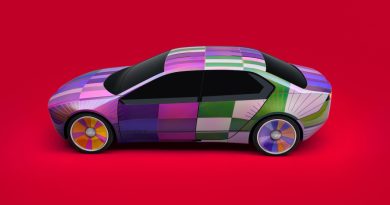Can synthetic fuels save racing as we know it?
The Federation Internationale de l’Automobile (FIA) has promised that every series it presides over, from karting to rallying to Formula One, will use 100% carbon-neutral fuel by 2026. With hardly any of motorsport’s emissions coming directly from the race cars, though, that promise risks either greenwashing larger logistical problems or promoting fuel solutions that have little road relevance.
The first FIA karting events running on 100% sustainable fuel began in March, using a drop-in fuel from German supplier P1 racing fuels. P1, who already supply to the World Rally Championship and fuelled Sebastian Vettel’s showruns in old F1 cars last year, make their fuel out of a blend of bio-ethanol and molecularly constructed synthetic fuel from captured carbon and green hydrogen.
From a fuelling and emissions perspective, karting might seem like the least of anyone’s worries. A kart tank holds less than two gallons of fuel, and the less a driver carries on board the lighter they’ll be and faster they’ll go, so the incentive to save is already there.
Anyone looking at it purely from an engineering perspective isn’t the average 12- or 14-year-old in 2023, though. The idea that you could be contributing to your own imminent doom isn’t theoretical for young people, it’s a reality they’re already contending with. According to a survey conducted by Bath University, three quarters of young people think the future is frightening and 56% believe that humanity is doomed because of climate change.
Then there’s the other existential threat, which is that motorsport could be prevented from continuing if it can’t prove it’s doing something sustainable. When other major carbon emitters being scrutinized are modes of transportation that people depend on, racing becomes an easy target.
“The move to 100% carbon-neutral fuel is a very important step in the evolution of all FIA karting championships,” said CIK-FIA president Akbar Ebrahim about bringing in the new fuels. “It ensures alignment with the FIA’s overall environmental strategy and allows us to continue racing in a sustainable manner.”
The point is to not disrupt racing while making (apparent) “concrete progress.”
That’s evident in the fact that nothing about the karts or the way they burn fuel has changed. What comes out of the exhausts will be exactly the same, it’s just that the CO2 and other emissions won’t come from fossil sources.
Instead of drilling crude oil out of the ground, P1’s synthetic fuels use ethanol from waste biomass and renewable-energy-sourced captured carbon and hydrogen from electrolysis of water. Waste biomass ethanol avoids farming new crops for fuel, so is an environmental bonus, while the captured carbon should — in theory — make what comes out of burning the fuel cycle neutral.
Which is all a long way of saying: rather than getting new carbon out of ground, where it’s been since the dinosaur era, this process just shuffles around the carbon that already exists in the atmosphere. That’s better than adding to it, but it comes at an enormous energy cost, which threatens to undermine the environmental value of synthetic fuel.
And then there is the question of the amount of CO2 emitted by race cars vs. what’s produced by the aircraft shipping them (and their hundreds of crew) all over the world. The actual emissions of, say, 60 cars pounding around Le Mans for 24 hours is effectively zero compared to those from the hundreds of thousands of people who’ve travelled to the campsites around the circuit.
F2 and F3 will use our first sustainable fuel from 2023 ♻️
A key milestone on our journey to use 100% sustainable fuel by 2026 and for the sport to become net zero carbon by 2030#F1 @Aramco pic.twitter.com/92catFiD2d
— Formula 1 (@F1) September 2, 2022
Does sustainable fuel in a race car actually fix anything or does it merely make everyone feel better? The answer is complicated.
Porsche is one of the automotive sector’s biggest investors in synthetic fuels. The German manufacturer just opened a new synthetic-fuel production facility in Antarctic Chile, whose pilot phase will power the Porsche Supercup and other GT series, before it moves to full production. This is a proving ground for the project, which Porsche sees as a way to continue to design, build and sell vehicles powered by internal-combustion engines.
Lots of really cool things have been developed on race cars that eventually made their way to road cars, but it’s very unlikely that mass-production synthetic fuel could be one of them. The processes to make synthetic fuel efficient, green and effective are all taking place in laboratories and steadily making their way to remote factories; Porsche chose Punta Arenas because it’s a windswept area where it’s easy to generate a factory’s worth of power from renewable resources, without anything else nearby to compete with its demands on the energy grid.
What synthetic fuels do is extend the lives of internal-combustion engines, whose orchestral wails are an emotive part of the sport that many long-time fans have grown to miss amid racing’s continued electrification, but their promise to keep the fires burning in motorsport doesn’t have much road relevance. And they risk promising a solution that doesn’t exist.
Racing is probably synthetic fuel’s most realistic application. For fans who love the roar of internal-combustion engines, it’ll be a popular choice, but for real-world development, its applications are limited. There are much clearer gains to be made in road-relevant technology from regenerative braking in electric and hybrid track vehicles.
Synthetic fuel could be a miracle for saving motorsport as we know it, but we shouldn’t get too lost in it being able to save more than that.
Source : Autonews.com




